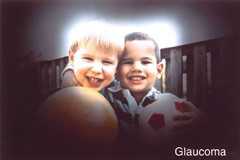Glaucoma Management
 Glaucoma is the leading cause of blindness and visual impairment in the US, and can affect patients of all ages, many of who do not experience any symptoms and may not be aware that they have the disease. Glaucoma actually refers to a group of diseases that cause damage to the optic nerve as a result of increased pressure within the eye, but can also be caused by a severe eye infection, injury, blocked blood vessels or inflammatory conditions of the eye.
Glaucoma is the leading cause of blindness and visual impairment in the US, and can affect patients of all ages, many of who do not experience any symptoms and may not be aware that they have the disease. Glaucoma actually refers to a group of diseases that cause damage to the optic nerve as a result of increased pressure within the eye, but can also be caused by a severe eye infection, injury, blocked blood vessels or inflammatory conditions of the eye.
There are two main types of glaucoma, open-angle and angle-closure. Open-angle glaucoma is the most common type of glaucoma and involves fluid in the eye not draining properly through the trabecular meshwork. Angle-closure glaucoma involves a sudden buildup of pressure in the eye and poor drainage because the angle between the iris and the cornea is too narrow.
Many patients do not experience any symptoms during the early stages of glaucoma, including no pain and no vision loss. This makes it difficult for many patients to know if they have the disease. But as glaucoma progresses, patients may experience a loss of peripheral or side vision. Patients with Angle-closure glaucoma may develop sudden eye pain, headache, blurred vision or the appearance of halos around lights.
Diagnosing Glaucoma
While some patients may experience symptoms from glaucoma as the disease progresses, others do not learn they have the condition until they undergo a routine eye exam. There are several different exams performed to diagnose glaucoma, including a visual acuity test, tonometry (a measurement of the pressure in the eye), gonioscopy (a test to determine whether the angle is open or narrow), a visual field test, an optic nerve analysis, optic nerve photographs, and pachymetry (a measurement of the corneal thickness).
Treatment for Glaucoma
Once glaucoma has been diagnosed, treatment should begin as soon as possible to help minimize the risk of permanent vision loss. There is no cure for glaucoma, so treatment focuses on relieving symptoms and preventing further damage from occurring. Most cases of glaucoma can be treated with eye drops, laser surgery or microsurgery. The best treatment for your individual case depends on the type and severity of the disease, and can be discussed with your doctor.
- Laser Peripheral Iridotomy (LPI) – For patients with narrow-angle glaucoma. A small hole is made in the iris to increase the angle between the iris and cornea and encourage fluid drainage.
- Argon Laser Trabeculoplasty (ALT) or Selective Laser Trabeculoplasty (SLT) – For patients with primary open angle glaucoma (POAG). The trabecular passages are opened to increase fluid drainage. ALT is effective in about 75% of patients, and SLT may be repeated.
- Nd: YAG Laser Cyclophotocoagulation (YAG CP) – For patients with severe glaucoma damage who have not been helped with other surgeries. The ciliary body that produces intraocular fluid is destroyed.
- Filtering Microsurgery (Trabeculectomy) – For patients who have not been helped with laser surgery or medications. A new drainage passage is created by cutting a small hole in the sclera (the white part of the eye) and creating a collection pouch between the sclera and conjunctiva (the outer covering of the eye).
- Tube Shunt Surgery – May be recommended for patients with neovascular glaucoma, failed trabeculectomy, or susceptibility to developing scar tissue. A thin, flexible tube (a shunt) with a silicone pouch is inserted in the eye to facilitate drainage.


